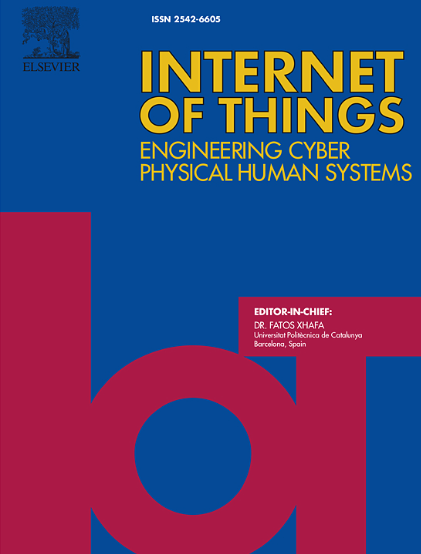一个可解释的人工智能增强智能建筑节能室内定位框架
IF 6
3区 计算机科学
Q1 COMPUTER SCIENCE, INFORMATION SYSTEMS
引用次数: 0
摘要
室内定位问题仍然是一个突出和广泛争论的研究领域,缺乏一个普遍接受的解决方案,特别是在智能建筑的背景下。一个主要的问题是与室内定位系统相关的能耗。本研究提出了一个为智能建筑设计的节能室内定位系统的建议框架。该方法侧重于指纹室内定位技术,该技术涉及构建信号地图。为了解决不同信号效应和信号图的环境特定结构所带来的挑战,该研究引入了一个包含自适应滤波器选择方案的框架。该方案在预处理阶段采用卡尔曼滤波、粒子滤波和Savitzky-Golay滤波来增强信号映射。该研究提倡优化信号映射以最大限度地减少能耗,而不是诉诸额外的硬件来提高定位精度。此外,该研究强调了机器学习技术的有效特征选择,以提高性能和提高定位精度。研究结果将使用可解释模型不可知论解释(LIME)和可解释人工智能(XAI)模型进行分析。该研究深入研究了每个信号和滤波器对定位估计的影响,提供了对系统功能的全面了解。本文章由计算机程序翻译,如有差异,请以英文原文为准。
An Explainable Artificial Intelligence empowered energy efficient indoor localization framework for smart buildings
The indoor localization problem remains a prominent and extensively debated area of research, lacking a universally accepted solution, especially within the context of smart buildings. A major concern revolves around the energy consumption associated with indoor localization systems. This study presents a proposed framework for an energy-efficient indoor localization system designed for smart buildings. The approach focuses on a fingerprinting indoor localization technique that involves constructing a signal map. To address challenges arising from distinct signal effects and the environment-specific structure of signal maps, the study introduces a framework incorporating an adaptive filter selection scheme. This scheme includes Kalman, particle, and Savitzky–Golay filters in the pre-processing stage to enhance the signal map. Rather than resorting to additional hardware for improved localization accuracy, the study advocates for optimizing the signal map to minimize energy consumption. Additionally, the research emphasizes the selection of effective features for machine learning techniques to enhance performance and boost localization accuracy. The findings are subjected to analysis using Interpretable Model-agnostic Explanations (LIME) and Shapley Additive exPlanations (SHAP) Explainable Artificial Intelligence (XAI) models. The investigation delves into the impact of each signal and filter on positioning estimation, providing a comprehensive understanding of the system’s functionality.
求助全文
通过发布文献求助,成功后即可免费获取论文全文。
去求助
来源期刊

Internet of Things
Multiple-
CiteScore
3.60
自引率
5.10%
发文量
115
审稿时长
37 days
期刊介绍:
Internet of Things; Engineering Cyber Physical Human Systems is a comprehensive journal encouraging cross collaboration between researchers, engineers and practitioners in the field of IoT & Cyber Physical Human Systems. The journal offers a unique platform to exchange scientific information on the entire breadth of technology, science, and societal applications of the IoT.
The journal will place a high priority on timely publication, and provide a home for high quality.
Furthermore, IOT is interested in publishing topical Special Issues on any aspect of IOT.
 求助内容:
求助内容: 应助结果提醒方式:
应助结果提醒方式:


